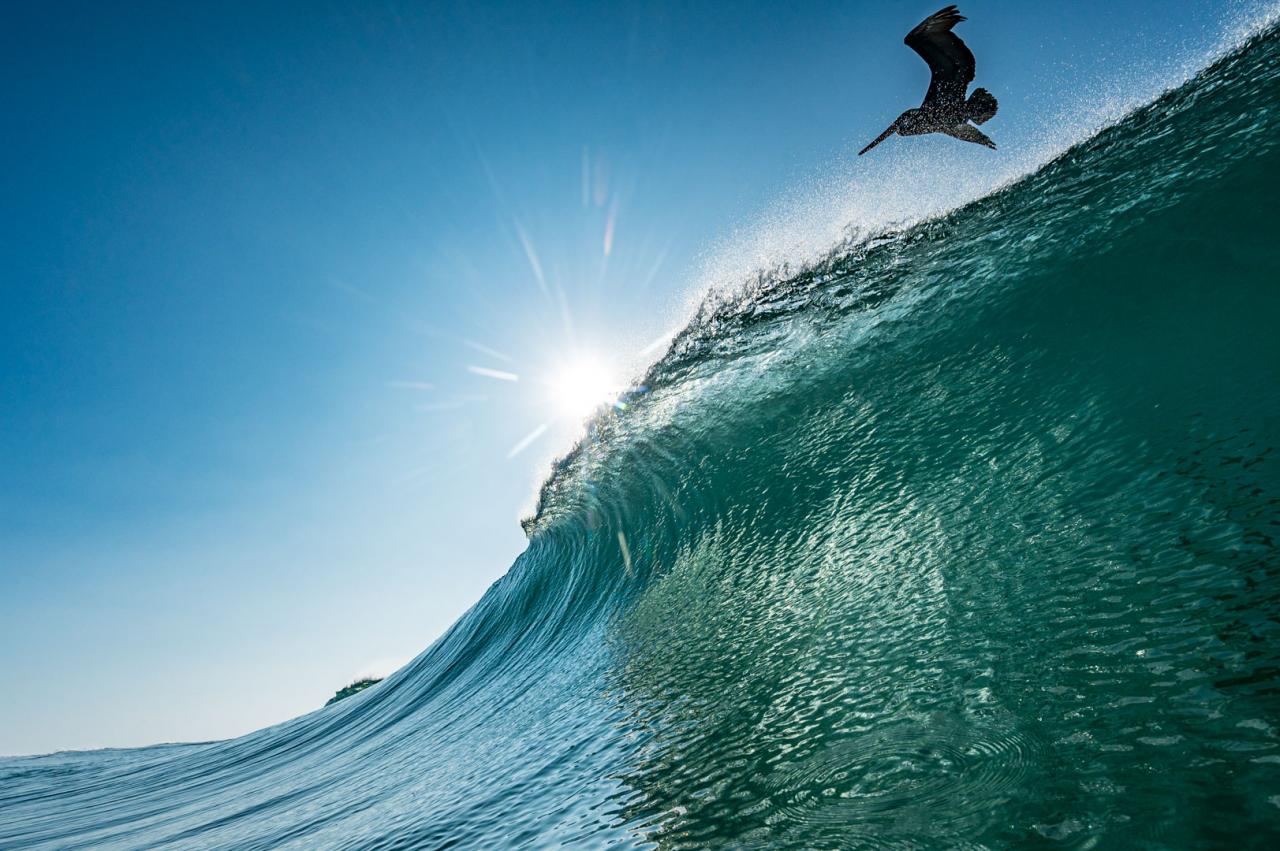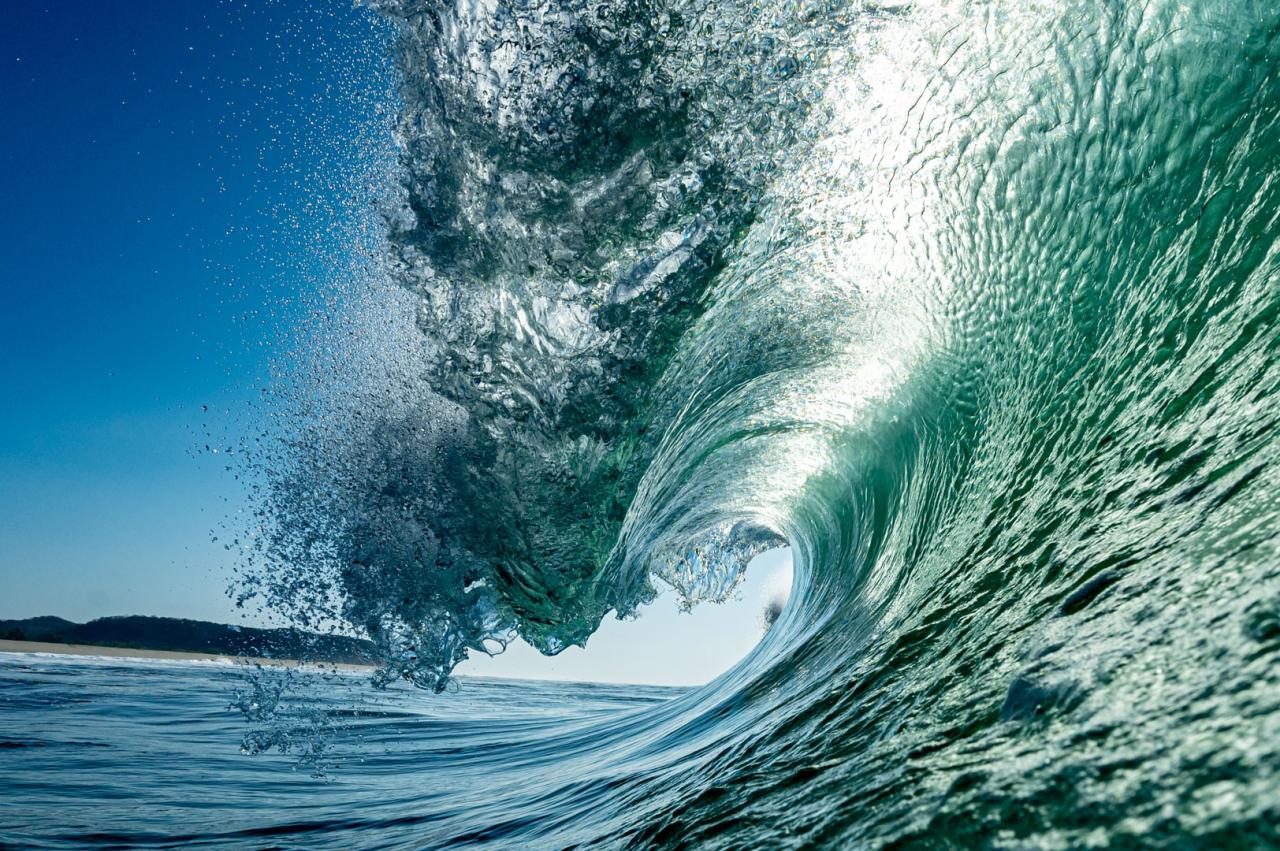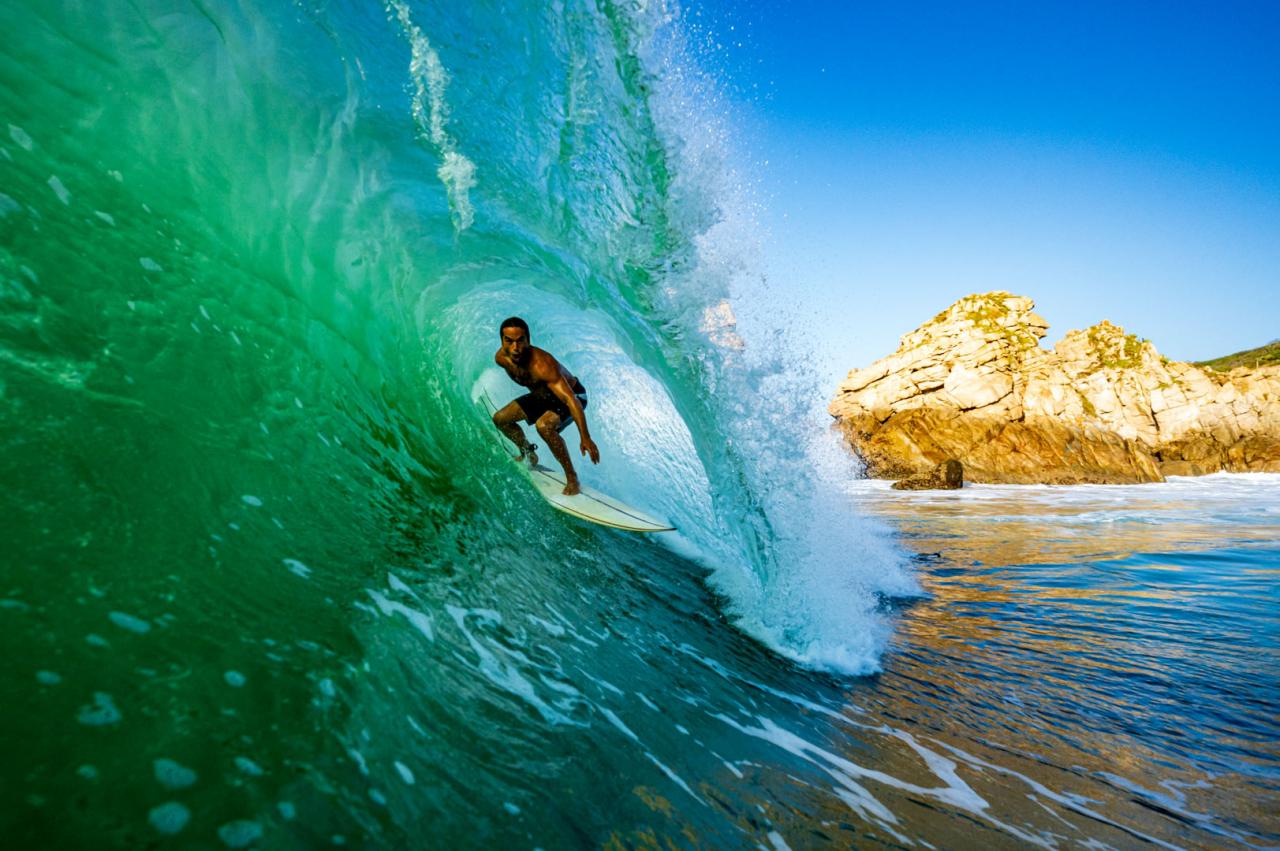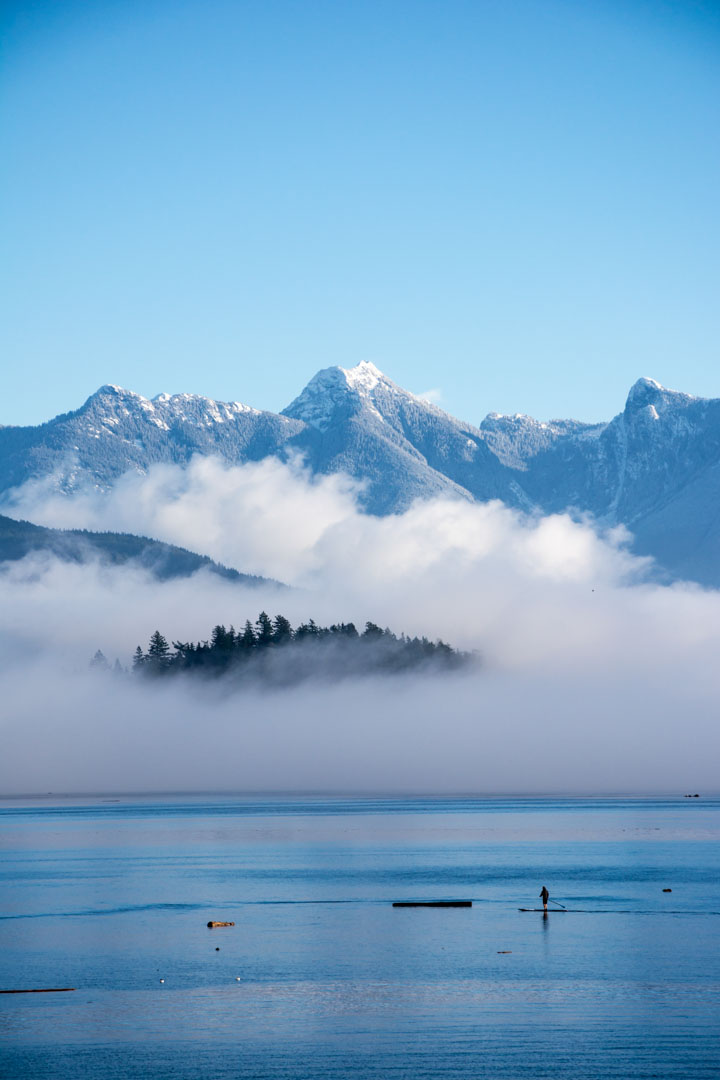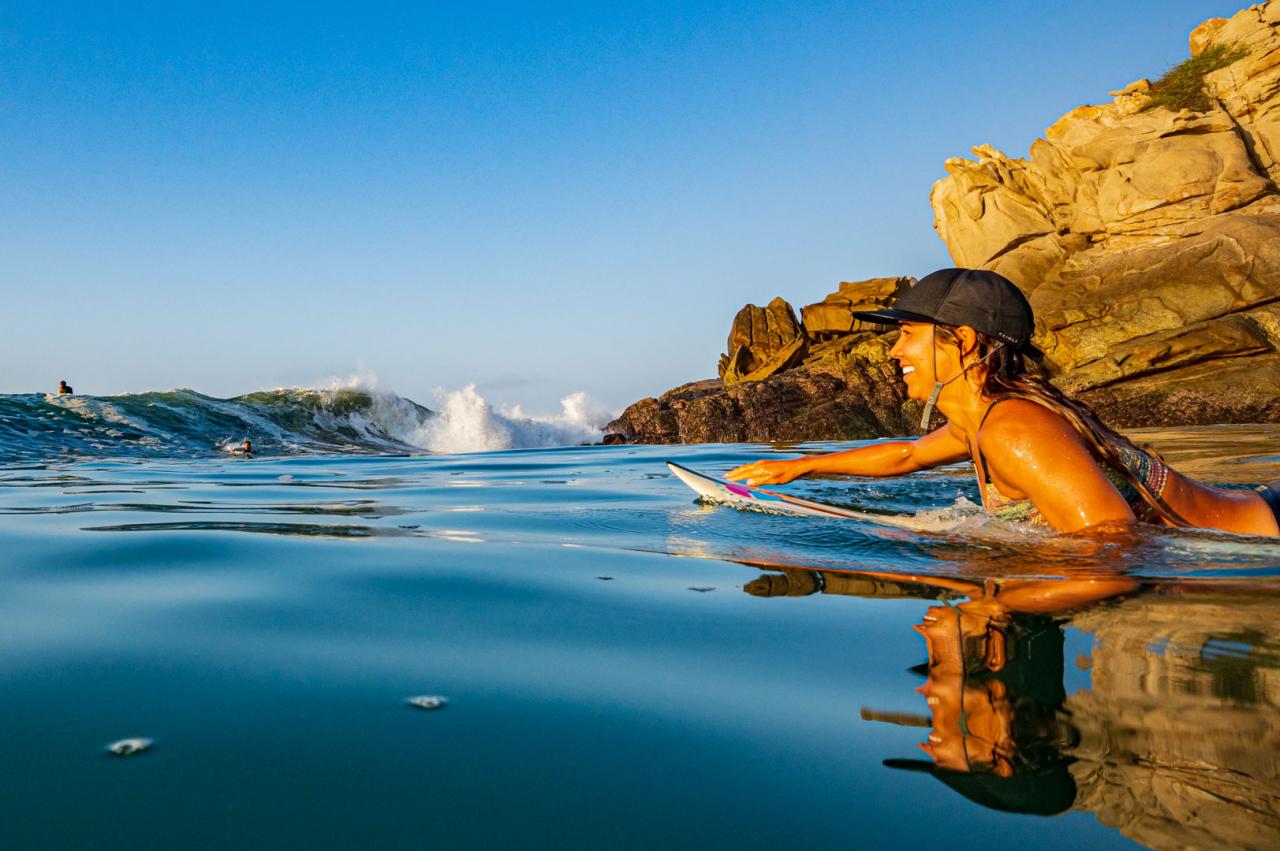Why are we drawn to oceans, lakes, and rivers for creativity and relaxation? Why does being on or near water set both our minds and bodies at ease? In his landmark, best selling book Blue Mind, Dr. Wallace J. Nichols unpacks the remarkable truth about the benefits of being on, in or simply near water. Based in cutting edge neuroscience with compelling personal stories from world ranked athletes, leading scientists, military veterans and gifted artists, he reveals how our relationship to water can improve athletic performace, activate states of calmness, decrease stress and anxiety, and increase professional success. Blue Mind not only illustrates the critcal nature of our connection to water — it provides a paradigm-shifting blueprint for a better life on this Blue Marble we call home.
SESSION MAG: In your book, Blue Mind, you say that ‘water provides the most profound shortcut to happiness’. How does being around water improve mental health?
WALLACE J. NICHOLS: Let’s dive right in! That’s a question big enough to fill SEVERAL books.
I say “profound” because I don’t think there’s a bigger, more interesting and important conversation to have right now than the one about our relationship with water.
I refer to it as a shortcut because we can find water in one of its states or forms anywhere, anytime. And it really can help us shift our minds into a better place.
Water helps to quiet the noise, be it visual or auditory. It simplifies what we see and hear. That can give us a break. When we are immersed or submerged in it, we also get a break from gravity. It’s also a good place to get a digital detox tech break, as our electronic devices don’t care for water much. In a similar sense, it may be the last place we can go to experience true privacy, solitude and a unique kind of intimacy that is getting harder and harder to find.
Those are all truly gifts to our mental wellbeing in our busy, uncertain, fast modern world.
SESSION MAG: Blue Mind, Red Mind, and Grey Mind are states of consciousness most of us have experienced to some degree. How does understanding the neuroscience behind these concepts help us in achieving greater well being?
WALLACE J. NICHOLS: These three color-coded mind states are a massive simplification of our complex emotional lives, kind of a cartoon version. But the simplicity makes them useful, as people can be uncomfortable talking about their mental health. It’s easy to say to your partner or co-worker “I’m feeling a bit too much red mind, I don’t want to slip into gray mind, let's go get some blue mind…”
Red mind refers to our new normal. Many of us are overscheduled, overworked, and overstimulated. The supercomputer we carry around gives us information about anything any time we want it. It makes us feel like we are always on, in one way or another. Add to that a 24/7 news cycle, concerns and uncertainty about the economy, wars, or the environment. This list goes on. Red Mind is very useful: it’s how we compete, strive, work hard, reach goals and win. But it can’t be our only mode for long.
The American Psychological Association (APA) puts out a report called Stress in America each year. In 2019, pre-pandemic, the news wasn’t good. Suffice it to say post-pandemic it has not gotten any better. Record levels of stress across age groups, especially young people, are leading to high levels of burnout, which I refer to as 'Gray Mind'. When Red Mind overwhelms us, our body and mind shut down. And that usually doesn’t happen at a convenient or scheduled moment.
Blue Mind gets us back to that calm, creative, connected and compassionate place where we are functioning at our best.
This all maps nicely onto polyvagal theory which describes the neurophysiology of our behavior and psychological experiences: the parasympathetic (restful), sympathetic (stressful) and dorsal states (shutdown).
SESSION MAG: How does Blue Mind affect our physiology? What happens when we are in a ‘Blue Mind state’?
WALLACE J. NICHOLS: The studies of so-called “blue space” (a.k.a proximity to water) are fascinating and really starting to show cool results. When people are asked to self-report their mood, water rises to the top of the list of environments that give us a boost. And when we look at basic physiological responses like breathing rate, heart rate, blood pressure, or skin temperature it’s clear that blue space calms us, reduces stress. That’s also supported by studies looking at stress hormones like cortisol in blood and saliva. A recent meta-review looked at fMRI and EEG studies comparing urban environments to natural environments and found that time in green and blue spaces produce higher activity in brain regions that make us feel more at ease, including alpha brain waves associated with calm wakefulness, activation of brain regions associated with beauty and pleasure, a reduction in neural circuits linked to stress and negative affect and overall high-quality green or blue spaces, and biodiverse urban areas, are important for positive neural, cognitive, and emotional processes.
The psychologists who study the science of awe point out that water is our planet’s greatest source of awe and wonder and those emotions it creates builds our capacity for empathy and compassion, leading to more pro-social and pro-environmental behaviors. A healthy, safe and accessible lake, river or ocean is literally an empathy factory. That’s some of the most important research I’ve ever heard of.
SESSION MAG: You say in your book that, “Surfers probably exhibit more Blue Mind than anyone?” Why is that?
WALLACE J. NICHOLS: Surfers reap the benefits of all forms of water throughout their days and lives. They, of course, interact with wild water and get the emotional and physical benefits of surfing. They often spend more time in domesticated water (showers, tubs, pools, cold plunges, etc). In town, they are likely to gravitate to urban waters, such as waterfronts, boardwalks, river walks. And in a more esoteric sense, virtual water (art, prose, photography, film and music), imaginary water (thoughts, memories and nostalgia about waves), and metamorphic water (the language of waves and water) are strongly and deeply connected to surf culture.
When you add in ocean and water advocacy and the benefits we get from service, having purpose and working for something bigger than ourselves, many surfers are the epitome of Blue Mind.
SESSION MAG: How do we hardwire happiness into our brains?
WALLACE J. NICHOLS: Water helps a lot with that, as it always seems to be changing and surprising us. Hour to hour, day to day, season by season and between years, the ocean, lakes and rivers are constantly changing. From a happiness standpoint, that’s the good stuff. You never know what wildlife may show up or who you’ll see on the beach.
SESSION MAG: What is a “Blue Mind Economy” and how can we take steps towards achieving this?
WALLACE J. NICHOLS: The term “blue economy” refers to any commerce that connects to water, the ocean in particular. Usually, the Blue Mind conversation is entirely left out. I think that undervalues the ocean and our waterways, leading to poor decisions that can wreck this place we call home. Bringing Blue Mind to the discussion, including the vast cognitive, emotional, psychological, social, physical and spiritual health and wellness benefits in our value equation tilts the benefits for humans in favor of a restorative Blue Mind Economy. In theory, at least. In the realm of Surfonomics, folks are starting to quantify these wellness benefits and the numbers are quite impressive. Healthy, strong, chill, creative, caring and collaborative people are also good for society.
SESSION MAG: What is the “100 Days of Blue Mind?” Who participates?
WALLACE J. NICHOLS: We started '100 Days of Blue Mind' back in 2014 as a way to bring people to practice Blue Mind daily, build new habits, and rewire their brains. The idea is to commit to being near, in, or under your water daily all summer for 100 consecutive days, roughly Memorial Day through Labor Day. Do what works for you wherever you are. Maybe make it a challenge with your friends. Take someone with you on your daily excursions to water. Share your stories of it. If you miss a day or two, no sweat, keep going. Hopefully the new routine will stick and you’ll practice Blue Mind daily, for life.
SESSION MAG: How does what we value play into the achievement of Blue Mind?
WALLACE J. NICHOLS: I think one of our fundamental issues on the planet is this broken value equation. When we -as primates - undervalue anyone or anything, bad stuff happens. History is quite clear on this. When we view the ocean or a river for its ecological and economic benefits, that's a good start. But we also need to include the emotional benefits. That river in your town may be keeping the teachers, nurses and first responders healthy. It may be what makes the difference in a young person’s life. Surfing or paddling is good medicine. So is water gazing, floating, skipping stones.
SESSION MAG: Give us some examples of sensory experiences of water we can experience even when not being physically near a body of water.
WALLACE J. NICHOLS: I love this question because it brings the conversation to everyone. We can all practice Blue Mind daily, wherever we are.
If you unpack those seven forms of water I mention in my book: Wild (lakes, rivers, oceans, rain, etc.), Domestic (pools, tubs, showers), Urban (fountains and waterfronts), Virtual (artworks, poetry, music, film, photography, etc.), Imaginary (our vivid water memories), Embodied (all plants and animals, which are all mostly water), Metaphorical (water is the greatest source of metaphor, along with fire) and make your own list of activities, add in a few challenges, new skills or trips, it’s pretty amazing how we can engage every day: a mindful bath, a cold shower, pausing on a bridge, listening to your favorite water song, reading some Pablo Neruda ocean poetry or appreciating water-themed artwork.
I like walking people through this simple process, and at the end of it they have their own personal Bluescription. I haven’t yet met someone who didn’t find that they could create a beautiful, robust Blue Mind practice, even in Oklahoma.
SESSION MAG: What is your favorite quote about water and how does it relate to you personally?
WALLACE J. NICHOLS: The new afterword in the tenth anniversary edition of Blue Mind opens with a quote that means a lot to me. We lost our home to a wildfire and the aftermath was pure red and gray mind in all ways. It really put this Blue Mind stuff to the test for me personally. And through – or even due to – that catastrophic loss, I find that I’m filled with a massive amount of gratitude, awe and newfound cultivated empathy.
SESSION MAG: Since I first read the book Blue MInd 10 years ago (I like to believe I am one of the original subscribers to the movement), I've been able to witness the (r)evolution of the ideas contained within it. What fascinates me is how today more and more people are adopting the language, the concepts and the beliefs around maintaining greater health by spending time near water and using the term Blue Mind' to describe it. How do you explain that growth and the popularity of Blue Mind as an everyday term to talk about mental and physical well being?
WALLACE J. NICHOLS: We are all seeing that shift and it’s a very good change. First, we’ve simply given a name to something that seems to be universal, ancient and well-documented across cultures, traditions and sacred texts for all of known history. Then we backed it up with western science for those who need that. Second, good ideas are only sticky if they are useful. I believe people find Blue Mind to be a very useful tool and concept. Third, the more it moves in the direction of common knowledge and practice, the more it reinforces and reminds us to value water and practice Blue Mind, which - in turn -creates this cool positive, regenerative feedback loop. There are dozens of songs, boats and films called “Blue Mind” and hundreds if not thousands of organizations and businesses with “Blue Mind” in their name or mission. But my favorite are “Blue Mind” tattoos. It’s fun and world-changing stuff.
SESSION MAG: The most important question I have for you is this: As a firm believer in the science of Blue Mind, how do we get the word out and get more people involved to support this work and discover Blue Mind wherever they are?
WALLACE J. NICHOLS: I have some ideas. But there are so many curious, creative, innovative, motivated and talented people who are doing more research, curating therapies, protocols and practices, breaking down the barriers between people and their waters to improve access, educating and communicating artfully and wildly. They are fundamentally changing the way we think, feel and act in relationship with water for good. We are just getting started.
Dr. Nichols, congratulations on the 10th anniversary of the publication of your groundbreaking book, Blue Mind: The Surprising Science That Shows How Being Near, In, On or Under Water Can Make You Happier, Healthier, More Connected and Better at What You Do. We are excited to have a chance to reflect on and ask some questions about the fascinating study and neuroscience of being on or near the water. As you know, here at Session Mag, we are ALL believers!
For more on this topic: Listen to the "On Water: Session Magazine podcast" with Dr. Wallace J. Nichols at: session-magazine.com/podcast.

